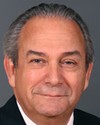Mr. Speaker, the new chair of the National Capital Commission recently spoke publicly in favour of urban development in the national capital region greenbelt. An outcry followed.
As a member from the national capital region, I rose in this House to state my opposition. This vision is completely at odds with the legacy left by 1950s visionary Jacques Gréber.
The greenbelt covers more than 20,000 hectares. It is a natural area which houses farms, forests and marshlands, but above all, the greenbelt has symbolic value for Canadians and residents of the national capital region. It represents a place of peace and ecological balance.
The greenbelt was developed to create a capital that reflects its citizens. With its spectacular beauty, the greenbelt welcomes visitors in a natural environment. These green spaces provide an exceptional quality of life for city dwellers. Canada's capital is a modern city, and its citizens are very concerned about environmental management.
Why would anyone want to destroy such a unique and irreplaceable part of our heritage? What could possibly justify that stance? I do not understand why the new NCC president would even say something like that. Of course management of urban and commercial development in the region is a major concern, but even minimal destruction of the greenbelt is not acceptable.
The NCC's mandate is to prepare plans for and assist in the development, conservation and improvement of the national capital region. The NCC has the power to fulfill that mandate. That was the context in which the NCC set about revising the greenbelt master plan.
The NCC faces an enormous challenge in reconciling the region's need for development with its original mandate and mission to plan for the greenbelt. As great as that challenge is, we must preserve the mandate.
The national capital region is home to another jewel: Gatineau Park, a remarkable 30,000-hectare natural preserve. The Gréber plan created Gatineau Park, a protected area that is home to numerous wildlife species. For countless residents and visitors, Gatineau Park is also the site of many recreational activities. Located at the city's doorstep, people enjoy year-round activities in the park.
The region's growing population has resulted in more people visiting the park. Visitors want to take advantage of outdoor activities that contribute to a healthy lifestyle. Increased visitation also puts pressure on Gatineau Park's development plan, because it creates challenges in terms of usage conflicts, preserving natural environments, and controlling access to the park.
The 2005 master plan for Gatineau Park has allowed an update of the vision, the mission and the land planning and use strategies for the park in the coming years. It combines the goal of preserving natural areas and that of using others for recreation and eco-tourism. This is a balanced vision in keeping with the original vision for Gatineau Park and it provides an update on the needs and uses of residents as well as visitors.
There are strong pressures to change the greenbelt and Gatineau Park. Will the Conservatives commit to the present vision and to making it consistent with that of the Gréber plan?

